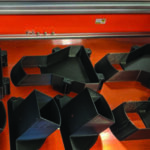In a progressive move for additive manufacturing, a new framework for industry standards has been announced. Two international standard-setting bodies, ISO and ASTA, jointly developed the Additive Manufacturing Standards Development Structure. The new framework received approval in July during a meeting in Tokyo, with the news filtering through recently that the guidelines have been set.
Structure
The implementation of these new technical standards represents a key turning point for the industry. As increasing numbers of businesses start to utilize 3D printed components, having a technical framework in place is essential for the development of additive manufacturing technology. Furthermore having this structure in place ensures companies won’t waste valuable resources such as time, wallowing in confusion about the best way to do something. Now, they can simply consult the new framework for the right answers.
Innovation
As a result of this news, one might ponder whether a reduction in innovation is an inevitability. Companies can now consult the technical standards for every little issue. Previously unheard of developments often arise spontaneously when people try to solve problems.And this is true for every technology. But both ISO and ASTM made a joint effort to clarify this is not their intention.
Cohesion
Instead, the idea is to bring a sense of cohesion to 3d printing. Consequently, the technology becomes more accessible, with more companies encouraged by the implementation of best practices. The result is an increase in innovation, with increasingly disparate industries reassured that they have a technical framework to consult if they encounter difficulties with 3d printing. We can also expect to see a guidance document that’ll accompany the structure, for easy referral.
Using the structure set out by the standard-setting bodies, experts can develop industry standards on three levels:
- General Standards for additive manufacturing concepts, common requirements & guides.
- Standards for printing with a range of material categories and processes. For example, metal powders or fused deposition modeling.
- Specialized standards for specific materials, processes, or industries.
The result is a more cohesive industry, with the integration of additive manufacturing likely to occur at an accelerated rate. This can only lead to better things for AM. Check out both the ISO website and the ASTM website if you want to learn more about these standard-setting bodies.










